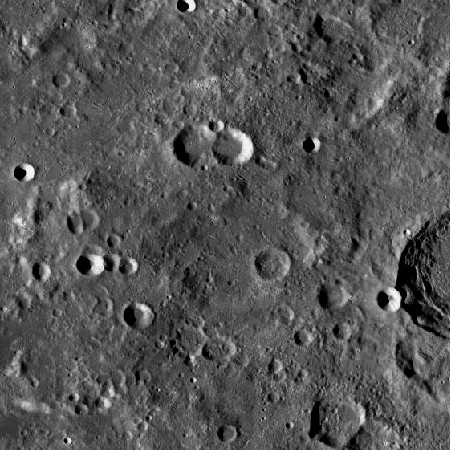Oriani
Contents
Oriani
(discontinued IAU name)
| Lat: 25.8°N, Long: 76.6°E, Diameter: 30 km, Depth: km, Rukl: 27 |

LROC . The image shows the region inmediately west of Plutarch ( right edge) where Oriani was described. It is not clear for which one of several ill-defined circular features was it named.
Images
LPOD Photo GalleryLunar Orbiter Images
Maps
(LAC zone 45A3) USGS Digital Atlas PDF
Description
Previously suspected crater near Eimmart, Seneca and Plutarch.
Description: Elger
(IAU Directions) ORIANI.--An irregular object, 32 miles in diameter, somewhat difficult to identify, N.E. of EIMMART. There is a conspicuous crater on the N. of it, with which it is connected by a prominent ridge.
Additional Information
- The position and diameter given in the title line are from Named Lunar Formations (1935).
Nomenclature
- Named for Barnaba Oriani, an Italian priest, geodesist, astronomer, and scientist (1752-1832). Discovered Messier 61.
- The name was introduced by Johann Heinrich Mädler.
- Oriani appears as Catalog Number 28 in Mary Blagg's Collated List (1913) and was part of the original IAU nomenclature of Blagg and Müller (1935), where it had two satellite craters (Oriani A and E) and two peaks (Oriani Alpha and Beta) assigned to it. Blagg noted that Schmidt mapped the craters in this region more to the south than Mädler or Neison, but believed he used most of the names (including this one) for the same features (Collated List, p. 169).
- The name was deleted by Kuiper in Table III of his Photographic Lunar Atlas (1960), and his change was adopted by the IAU in 1961 (IAU Transactions XIB).
- Note: the name Oriani is still printed on some of the modern moonmaps, such as the Hallwag moonmap and others.
LPOD Articles
Bibliography
E.A.Whitaker: Mapping and Naming the Moon (Cambridge, 1999).